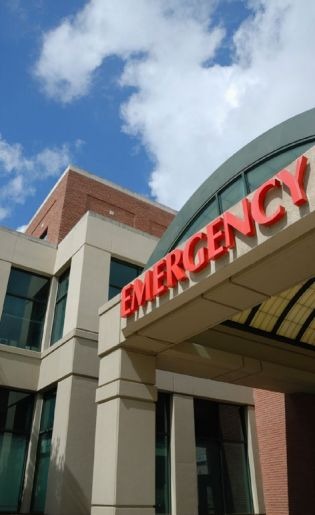Planning Unplanned Medical Care
WRITTEN BY Dr. Nancy Palermo Lietz
In a perfect world, accidents would only happen during business hours and primary care physicians would manage these problems. Now when a patient has an emergent problem, most primary care physicians immediately refer him or her to an urgent care or emergency facility for treatment. Available appointments with the primary physicians are few and far between.
This brings us to the current growth of urgent care and emergency facilities. The public’s demand for immediate access to 24-7 medical care has fueled this trend. The growth started in the 1990s and continues to rise today. Increased accessibility has made choices more confusing for patients. With the Affordable Care Act and higher patient deductibles, patients are often influenced by the financial aspects of their care rather than focusing on what is the best care for their situation. Cost and long wait times at hospital-based emergency rooms also encourage patients to seek care elsewhere. Patients are left to make important decisions regarding their health without the proper medical expertise.
In the event you are like the one in four Americans requiring unplanned medical care, here’s a guide to help you navigate the best care at the proper facility. First and foremost, if you have a primary care physician, pediatrician or OB/GYN, it makes sense to check with their office, even after hours, for their recommended referral. Know your medical history, insurance benefits and current medications and doses prior to seeking any emergency care. It is a good idea to have this information available at all times.
Retail Health Clinics
Retail health clinics are generally found in drugstores, supermarkets and superstores. They are owned by the stores which seek to increase pharmacy revenues. These clinics are typically staffed by NPs (nurse practitioners) or PAs (physician assistants) and do not have x-ray or lab facilities. Often the medical staff cannot provide suturing. These facilities are best for:
• flu vaccines
• routine immunizations
• uncomplicated sports physicals
• minor skin irritations
• mild cold and flu symptoms
Any chronic conditions or more serious issues should not be treated at these clinics.
Urgent Care Clinics
Urgent care clinics have increased in number because of the benefits they provide to patients. Many of these centers are free-standing, walk-in clinics that are either independent or owned by area hospitals. They are often open 12 hours a day, 7 days a week and are usually staffed by emergency physicians, family physicians and PAs. Wait time is typically 30 minutes or less. Urgent care centers usually provide basic x-ray and lab services, but they rarely offer ultrasound, CT or MRI services. Most centers require insurance or payment in full when services are rendered. Visits are generally covered by insurance (after a deductible is reached), and the cost for the visit is often significantly less than an ER visit but more than a retail clinic.
Urgent care facilities are not recommended for chronic, more serious or life-threatening conditions. They are never staffed by specialists, so if additional care is needed patients are referred or transferred to an ER facility at the patient’s cost.
Urgent care centers are best for:
• minor non-cosmetic suturing of wounds
• immunizations
• routine school and sports physicals
• minor fracture care
• sprain or dislocation
• ear infections
• cold and flu management
• gastroenteritis
• uncomplicated urinary tract infections
• minor skin irritations
Some urgent care facilities can manage IV fluids for dehydration.
Research the urgent care facilities near you to make sure they have Urgent Care Accreditation. This is a voluntary accreditation that measures the quality of the services and outcomes as compared to national standards.
Emergency Rooms
 Emergency room visits now number 110 million annually and are increasing despite a decrease in the number of ERs. There are two types of ERs: hospital-based and free-standing. Both can handle significant medical emergencies like chest pain, trauma or stroke. In general, if symptoms come on acutely and are severe, it is best to seek care at a hospital-based emergency room.
Emergency room visits now number 110 million annually and are increasing despite a decrease in the number of ERs. There are two types of ERs: hospital-based and free-standing. Both can handle significant medical emergencies like chest pain, trauma or stroke. In general, if symptoms come on acutely and are severe, it is best to seek care at a hospital-based emergency room.
Hospital-based ERs typically have longer wait times due to more complex medical conditions being treated and to the onslaught of uninsured patients using the ER for minor care. Free-standing ERs generally have a shorter wait time because they usually see only quarter of the number of patients and, based on locations in the community, are seeing only insured, paying patients.
Typically, ERs are fully staffed 24-7 by emergency room physicians and registered nurses who specialize in emergency care. Costs and wait times are increased to support this coverage and level of care. An ER visit may be four to five times the cost of an urgent care visit. Typically it is fully covered by insurance (after deductibles) when the care is warranted.
Both types of ERs have full laboratory and radiology capabilities including CT and MRI and ultrasound in most cases. Free-standing ERs do not always have extensive on-site imaging, and referral to the hospital may be required for complete assessment. Hospital-based ERs also have specialist availability on-site or on-call for more complex situations or if conditions require surgery or a procedure, like a heart catheterization. Free-standing ERs do not have this option. If a higher level of care is needed at a free-standing ER, transfer to a hospital is required, often at the patient’s expense. This transfer for treatment only further delays care.
Free-standing ERs are often found in affluent neighborhoods or rural areas and can be more attractive to patients because of location. Treatment cost at a free-standing ER is comparable to a hospital-based ER. They should not be used for treatment of conditions easily treated at an urgent care. Given the potential limitations of free-standing ERs, unless a hospital is a unsafe distance from the patient, the hospital-based ER is preferred.
In the event you or a loved one has a after-hours health need, know your options so you can make an informed decision. Remember that if possible, it’s always best to check with your primary care physician for a referral when unplanned medical needs arise.


Leave a Reply